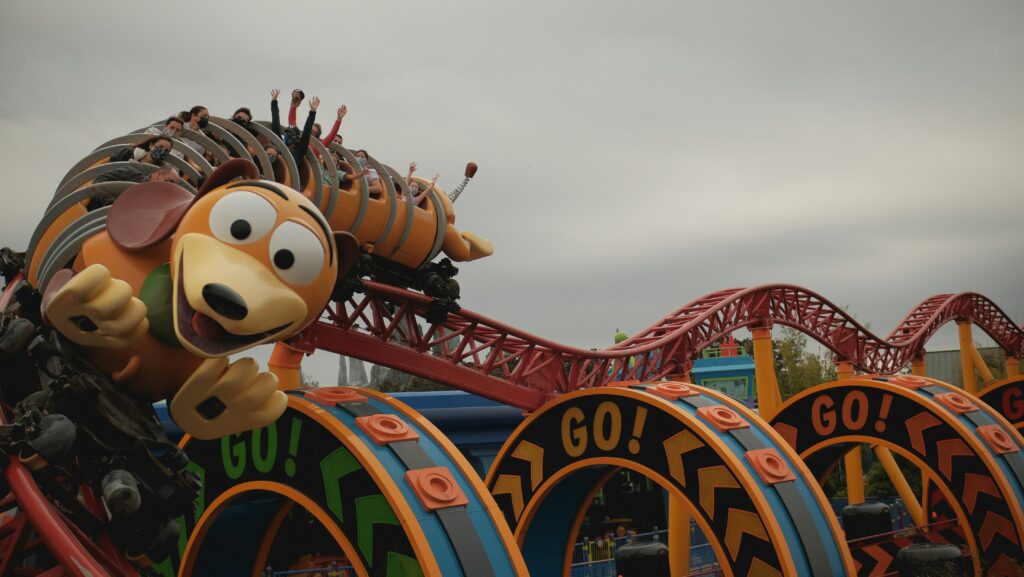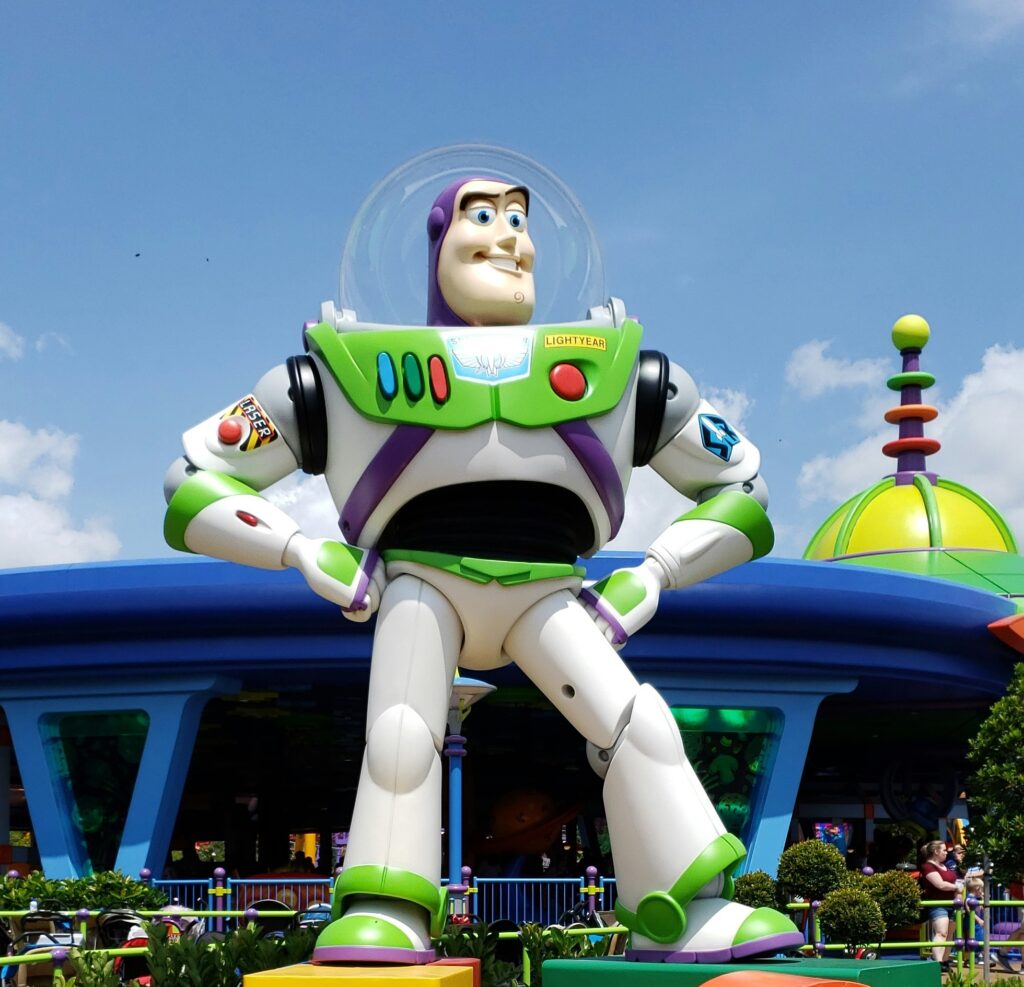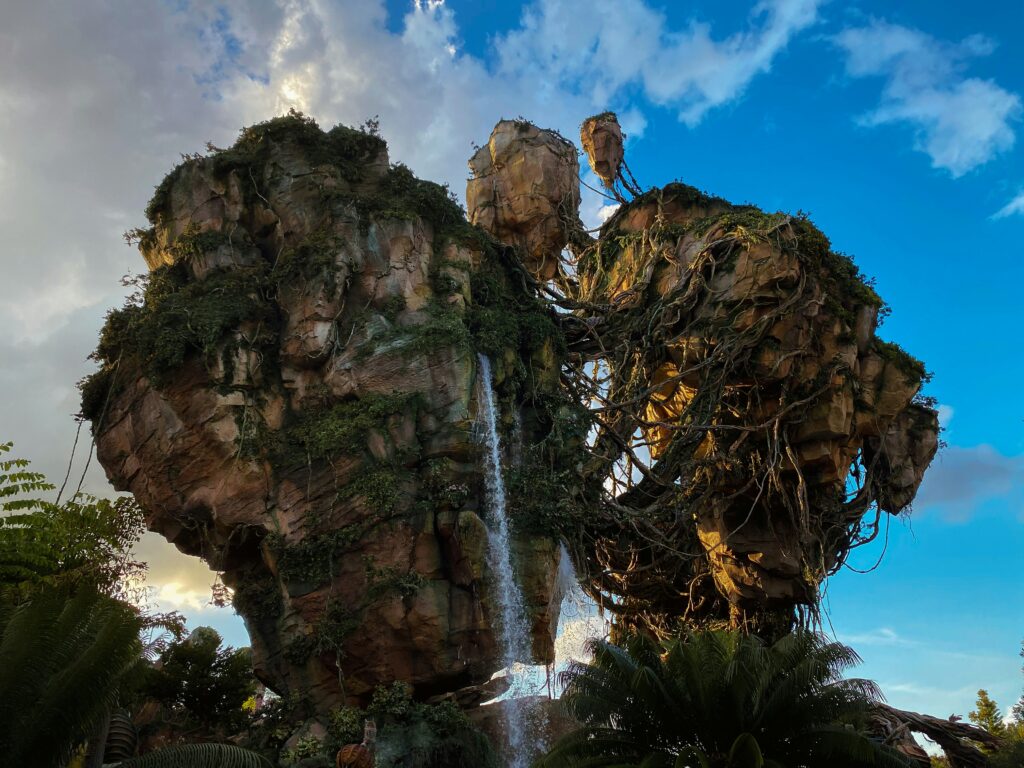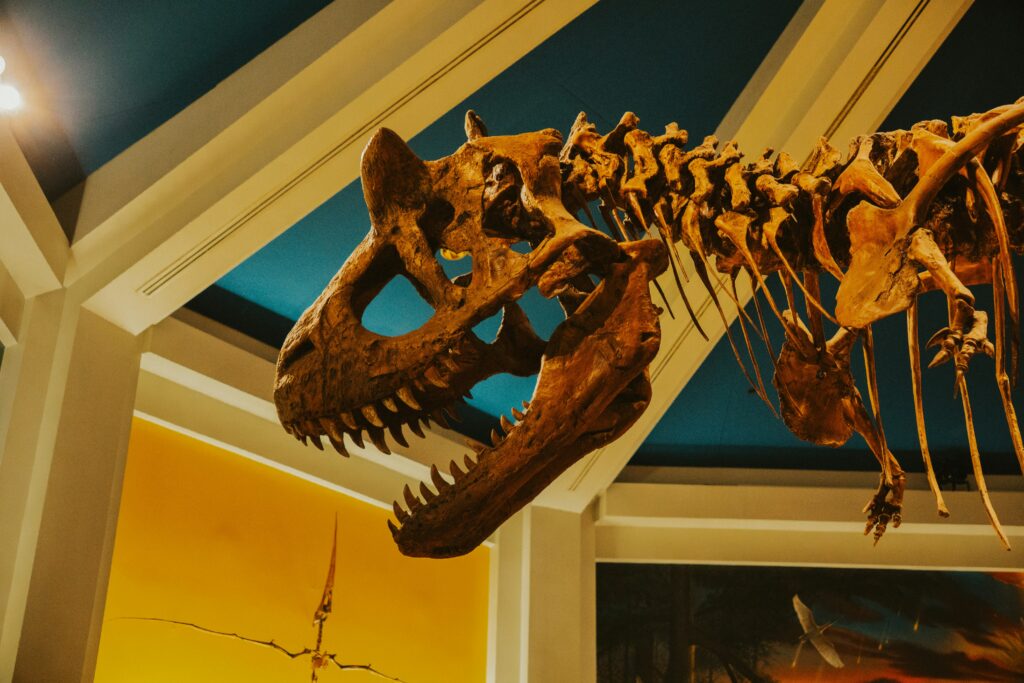Toy Story is one of Disney’s most beloved franchises, and with the success of its films, it was no surprise when Disney announced a themed area at Hollywood Studios. Toy Story Land opened in 2018, promising to bring guests into Andy’s backyard. But as it turns out, the land fell short of expectations. Let’s explore what was originally planned, what changed, and what Toy Story Land is missing.
The Original Vision: D23 2015
In 2015, Disney first unveiled concept art for Toy Story Land at the D23 Expo. I was admittedly excited at first, seeing as Disney opened a land based on the Cars film franchise. If Toy Story Land turned out half as good as Cars Land it would be a huge hit.
Several things stood out in the original concept art, including:
- Slinky Dog Dash: A family-friendly roller coaster, originally planned to weave through the landscape.
- Alien Swirling Saucers: A flat ride like Mater’s Junkyard Jamboree themed to the aliens from Toy Story.
- The Old West: A western-themed area that was rumored to include shops and a restaurant.
However, the land that opened in 2018 was not the land Disney fans were shown in the concept art. Budget cuts led to relatively minor changes that had a huge impact on the look and feel of the land.
Toy Story Land: The Reality

When Toy Story Land opened, guests were excited to experience two new rides: Slinky Dog Dash and Alien Swirling Saucers. Additionally, Toy Story Midway Mania received a new entrance, and Woody’s Lunch Box offered quick-service dining options.
But from day one, the land was met with two major challenges:
- Crowds: The land added two new rides to a park that desperately needed something new, but the attractions struggled to handle the demand.
- Lack of Shade: One of the most noticeable issues was the intense heat, with very little shade for guests waiting in lines or walking through the land.
While the land provided Hollywood Studios with a few additional attractions ahead of the highly anticipated Galaxy’s Edge, it was clear that Toy Story Land was not the groundbreaking immersive experience many had hoped for or that the iconic franchise deserved.
Missing Elements: A Look at What We Didn’t Get
If we compare the final version of Toy Story Land to the concept art, it becomes clear that several elements were removed or scaled back. The things I first noticed are:
- The Immersive Landscape: The original vision of a coaster integrated into the landscape didn’t materialize. Instead, the Slinky Dog Dash sits largely above ground, missing the chance to create a more engaging environment. It also has a shorter circuit than what we saw in the concept art.
- The Western Facades: A themed shopping area hinted in the concept art was never built, leaving guests without an indoor space to shop. Considering the land is based on Toy Story, a franchise about toys, it’s surprising that there’s no dedicated merchandise store.
Immersion and Theming: Where Disney Fell Short

One of the biggest criticisms of Toy Story Land is the lack of immersion. Unlike other themed areas in Disney parks, like Cars Land in California Adventure, Toy Story Land feels more like a collection of oversized toys and character statues than a fully realized world. The land’s design often feels cheap, relying on static figures rather than interactive or immersive elements. More to the point, there is nothing that conveys to guests they are actually in Andy’s backyard.
Problems That Extend Beyond Toy Story Land
Unfortunately, Toy Story Land seems to have set a precedent for recent Disney theme park offerings that underwhelm. We see similar issues in other new lands, like Star Wars: Galaxy’s Edge and Avengers Campus, which, while visually impressive, lack the immersive charm Disney is known for. The best way I can describe it is these lands lack a “soul.” While that may sound ridiculous, the area simply cannot compare to even the former A Bug’s Land at California Adventure.
Fixing Toy Story Land: What Could Be Done?
So, what can be done to improve Toy Story Land? Here are a few ideas I’ve come up with:
- Add Shade and Indoor Spaces: The glaring lack of shade is one of the most easily fixable issues. Additional covered seating areas, especially at Woody’s Lunch Box and in the Slinky Dog Dash queue, would provide relief from the sun.
- Create a Merchandise Store: A land centered around toys without a toy store seems like a missed opportunity. A large, interactive shop with exclusive Toy Story merchandise would not only enhance the experience but would likely be a big hit with fans. I would personally like to see Al’s Toy Barn from the second movie, but I don’t think there is enough space for a proper recreation.
- Enhance Theming and Immersion: Incorporating more interactive elements and improving the overall theme would elevate the land. Adding more dynamic elements, like character appearances, could help bring the space to life.
- Expand the Land: While space is limited, Disney could look at ways to expand into nearby areas, potentially adding another flat ride or even a show would go a long way. I recently heard someone mention moving Triceratops spin here and retheming it, which would be a great opportunity.
Looking Ahead: Could Pixar Place Make a Comeback?
With the constraints around Toy Story Land, expanding the Pixar footprint at Hollywood Studios could be a logical next step. One idea would be to introduce a Monsters, Inc.-themed land adjacent to Toy Story Land, potentially revitalizing the Animation Courtyard area. By doing this, Disney could create a larger Pixar presence at the park, connecting these beloved films in a way that feels cohesive and immersive.
There’s also potential to re-theme the Rock ‘n’ Roller Coaster, perhaps incorporating The Incredibles to tie into the larger Pixar theme. While this is purely speculative, it’s clear that Toy Story Land needs more work to improve its guest experience. It would also (quite literally) pave the way for connecting Sunset BLVD to the expanded areas, making the park easier to navigate.
Conclusion
Toy Story Land, while a welcome addition to Hollywood Studios, has its share of shortcomings. From budget cuts that altered the original vision to the lack of shade and immersive theming, the land hasn’t quite lived up to the high standards set by other Disney lands. However, with a few key improvements, there’s potential to turn this land into a truly memorable part of the park.




